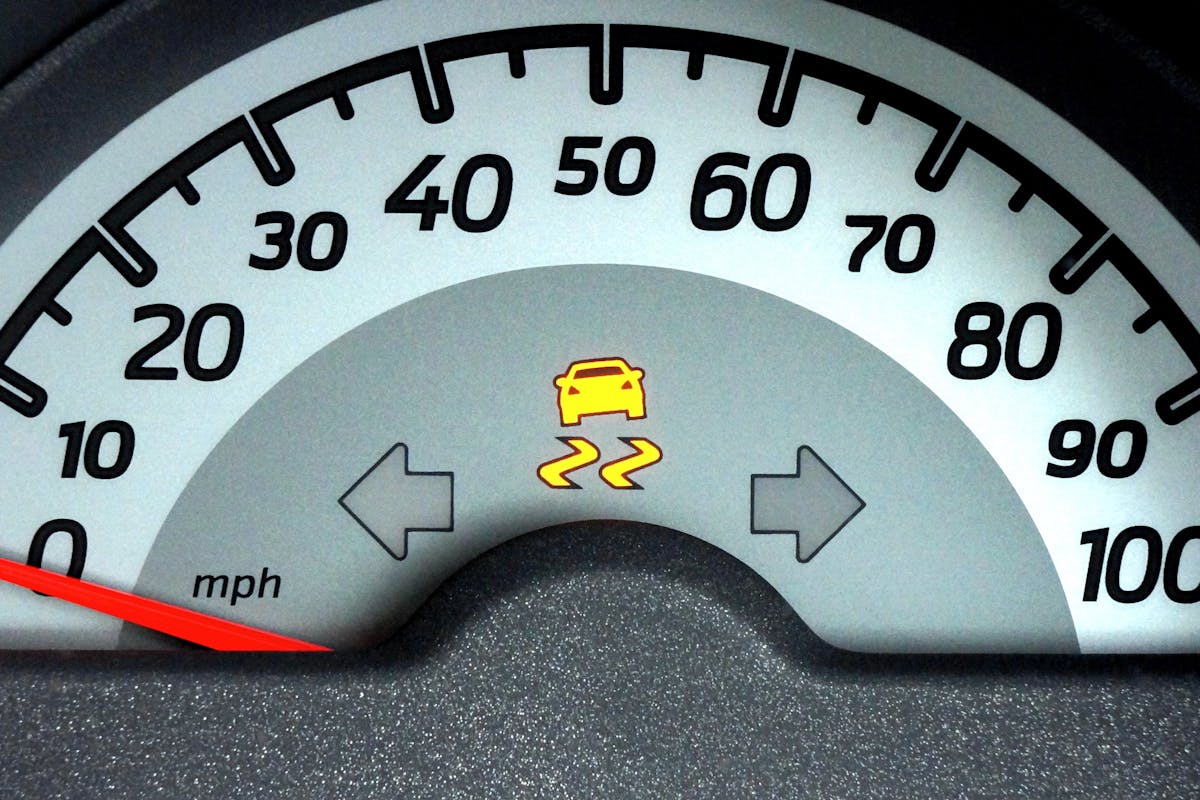As vehicular mishaps continue to be a significant cause of concern worldwide, the role of advanced safety measures such as Anti-Lock Brakes (ABS) and Traction Control in reducing these alarming incidents becomes highly pertinent. These technologies, by enhancing vehicle stability and control, have the potential to address some of the key causes of accidents including driver error and adverse road conditions. But how exactly do these safety systems work, and what is their real impact on road safety? The answer to these questions can shed light on the future of vehicle safety measures.
Understanding Crash Statistics
While it may seem intimidating at first, understanding crash statistics is an essential part of implementing effective safety measures. The analysis of these statistics offers critical insights into the prevailing crash causes and the effectiveness of various safety mechanisms. This data-driven approach helps in predicting and preventing potential accidents, thereby enhancing overall road safety.
Crash causes, frequently derived from accident reports and surveillance systems, fundamentally contribute to the development of countermeasures. The typical causes range from driver error to mechanical failure, road conditions, and weather influences. A statistical breakdown of these factors can greatly aid in understanding the primary contributors to accidents and strategising appropriate interventions.
Safety trends, on the other hand, provide a timeline of the impact of safety measures, allowing researchers to track the effectiveness of implemented strategies. By observing these trends, we can identify what works, what can be improved, and what should be replaced to reduce the likelihood of future crashes. Consequently, these trends guide the review and revision of safety measures, ensuring their continual adaptation to the evolving patterns of road usage and vehicle technology.
The Need for Advanced Safety
Gleaning from the analysis of crash statistics, it becomes evident that there is an increasing need for advanced safety measures. This demand stems from the growing complexity of our transportation networks and the escalating traffic volumes. The integration of advanced technology in vehicular systems can considerably enhance safety and reduce the incidence of road accidents.
Advanced technology can contribute to safety in the following ways: – It can assist in improving driver awareness, thereby helping in proactive accident prevention. – It can provide active safety features that intervene during critical situations to prevent accidents. – It can offer passive safety features that protect occupants during accidents.
Driver awareness is an essential factor for road safety. Technologies such as advanced driver-assistance systems (ADAS) can enhance awareness by providing real-time information about the vehicle’s environment. Active safety features, including anti-lock braking systems and traction control, can help control the vehicle during critical situations. Passive safety features, like airbags and crumple zones, can reduce injury severity during an accident.
Consequently, the introduction of advanced safety features, powered by sophisticated technology, is a vital step in enhancing road safety.
Anti-Lock Brakes: An Overview
Anti-lock Braking Systems (ABS) represent a significant advancement in vehicle safety technology. A thorough examination of ABS aids in understanding its function, operation, and the inherent benefits that contribute to the reduction of crash incidence. These benefits, primarily rooted in enhancing a vehicle’s traction control during abrupt stops, are essential to the broader discussion on effective safety measures in response to crash statistics.
Understanding Anti-Lock Brakes
In the domain of automotive safety, one revolutionary feature stands prominent: the anti-lock braking system (ABS). Developed as a critical response to crash statistics, this anti-lock technology has redefined the traditional concept of a vehicle’s brake system.
ABS operates on a simple yet effective principle. When the brakes are applied under harsh conditions, they tend to lock up, causing the vehicle to skid. The ABS, however, prevents this by automatically modulating the brake pressure to each wheel, thereby avoiding wheel lock-up.
To visualize the operation and significance of ABS, consider the following elements:
- The electronic control unit (ECU): This component constantly monitors the rotational speed of each wheel. Any sudden decrease in speed, indicating a potential lock-up, triggers the ABS.
- Hydraulic units: These modulate the brake pressure to each wheel based on the signals received from the ECU, preventing lock-up.
- Speed sensors: These components provide real-time wheel speed data to the ECU.
Understanding the anti-lock brake system is essential in appreciating its role in enhancing vehicular safety. Its integration has not only revolutionized braking but also set a new standard in automotive safety technology.
Benefits of Anti-Lock Brakes
The advent of the anti-lock braking system has ushered in a number of significant benefits, enhancing both vehicle performance and passenger safety. The principal anti-lock benefits are multifold, with a pronounced impact on driving dynamics. By preventing wheel lock-up during braking, it guarantees directional control and stability of the vehicle, particularly in wet or icy conditions.
This safety improvement is mainly evident in emergency scenarios where sudden braking is compulsory. It allows the driver to maintain steering control while decelerating rapidly, thus evading potential hazards and reducing the likelihood of skidding or spinning out. The anti-lock braking system not only guarantees shorter stopping distances but also contributes to enhanced tyre longevity by minimizing excessive tyre wear.
Moreover, the integration of the anti-lock braking system with other safety technologies like traction control and electronic stability control has amplified its effectiveness. In sum, the implementation of anti-lock brakes represents a significant stride in vehicular safety, aligning with the growing expectation of consumers for advanced safety features in vehicles. It is, consequently, a vital factor in reducing crash statistics and improving overall road safety.
Functionality of Anti-Lock Brakes
Bringing vehicle safety to the forefront, we explore the functionality of anti-lock brakes, a feature that has revolutionized the automotive industry. This brake technology is one of the pioneering safety innovations that have drastically improved driver control during abrupt braking scenarios.
The anti-lock braking system (ABS) operates in a highly sophisticated manner:
- The system monitors the rotational speed of each wheel during braking.
- If an impending lock is detected, ABS modulates brake pressure, allowing the wheel to continue rotating.
- This process repeats multiple times per second, providing ideal braking performance.
This functionality is primarily aimed at retaining steering control during an emergency stop, preventing uncontrolled skidding. In addition, it reduces the stopping distance on slick surfaces, contributing to enhanced vehicular safety.
Understanding the functionality of anti-lock brakes aids in comprehending its role in minimizing collisions. As the trends in crash statistics show, the introduction of ABS has made significant strides in improving road safety. This brake technology, with its complex yet crucial functionality, underscores the role of technological innovation in advancing vehicle safety.
Traction Control: A Breakdown
Traction control systems, as an integral facet of vehicular safety, merit thorough analysis. We will examine their underlying mechanisms, elucidate their benefits, and discuss effective implementation measures. This exploration will underscore the pivotal role of traction control in mitigating crash risks and promoting safer motoring environments.
Understanding Traction Control Systems
Often overlooked, yet significantly important to vehicle safety, is the traction control system. This sophisticated feature, powered by advanced traction control technology, plays a pivotal role in maintaining vehicle stability and control, particularly in challenging driving conditions.
Traction control systems work by regulating the amount of power that can be transmitted to the wheels. In situations where the system detects wheel slip, it responds by cutting power or applying brakes to the affected wheels, thereby enhancing vehicle stability and reducing the likelihood of skidding.
To create a vivid picture of how traction control works, consider the following:
- A car driving on a slippery road: The system detects wheel slip and immediately reduces power to the slipping wheels, aiding in maintaining control.
- A vehicle accelerating rapidly: When excessive power causes wheel spin, the system intervenes, aiding in maintaining traction and steering control.
- Driving on uneven terrain: Here, power is redirected to wheels with the most grip, optimizing vehicle control and stability.
Understanding the intricate operation of traction control systems is key to appreciating the traction control advantages. As we advance to the next topic, we’ll explore further into the benefits of this essential safety measure.

Benefits of Traction Control
The driver’s peace of mind is greatly enhanced by the presence of a traction control system in their vehicle. This system, designed to maximize the grip of tires on the road, provides traction control benefits that are essential for driving safety and efficiency. When driving conditions are challenging, such as on wet, icy, or otherwise slippery surfaces, the traction control system can modulate the power output to the wheels. This prevents wheel spin, thereby maintaining the tire’s contact and grip with the road surface.
As a safety feature, the traction control system considerably reduces the risk of losing control due to wheel skid, enhancing driving stability. This is particularly important when driving at high speeds, making sharp turns, or maneuvering through tight corners. By dynamically adjusting the vehicle’s power output based on the traction detected, it guarantees ideal contact between the tire and the road.
Furthermore, the traction control system’s ability to maintain the vehicle’s directional stability during acceleration is especially advantageous in situations that require rapid speed changes. To sum up, traction control systems play a vital role in enhancing vehicle safety and driver confidence by providing greater control and stability in various driving conditions.
Implementing Traction Control Measures
Understanding the benefits of traction control systems in enhancing driving safety and stability naturally leads us to contemplate how these measures can be implemented in a practical setting. To optimize the traction control benefits, it’s vital to integrate these systems into the vehicle design process from the earliest stages.
Traction control technologies function by limiting wheel spin during acceleration. This is achieved through a combination of brake intervention and engine power reduction. The system’s sensors monitor wheel speed and when excessive wheel spin is detected, the traction control system is triggered.
Consider the following steps to implement traction control measures:
- Integrating sensors: This includes wheel speed sensors, steering angle sensors, and throttle position sensors. These are the backbone of the traction control system.
- Developing control algorithms: Algorithms interpret the data from the sensors and make decisions on when to activate the system.
- Testing and tuning: This is essential to guarantee that the system responds adequately in a variety of driving conditions.
Hence, implementing traction control technologies is a detailed process that requires precision and advanced understanding of vehicle dynamics. The result, however, is a safer, more stable driving experience.
Working of Traction Control Systems
Harnessing the power of modern technology, traction control systems have emerged as a pivotal safety feature in the automotive industry. These complex systems are intricate assemblies of several system components, each playing a critical role in controlling wheel spin and maintaining vehicle stability.
The core components of a traction control system include wheel speed sensors, a hydraulic control unit, and an electronic control unit (ECU). The wheel speed sensors monitor and relay wheel rotation speed data to the ECU. When the sensors detect a difference in wheel rotation speed, indicating potential slippage, the ECU triggers the hydraulic control unit to reduce engine torque or apply brake force to the spinning wheel.
Performance metrics of traction control systems are primarily gauged by their effectiveness in preventing wheel spin across various road conditions and how swiftly they respond to slippage. Rapid response times and effective wheel spin prevention are indicative of a well-functioning system.
Impact on Road Safety
With the increasing implementation of traction control systems, a notable impact on road safety has been observed. These systems, working in tandem with anti-lock brakes, have been instrumental in the promotion of accident prevention and reshaping driver behavior.
- The first remarkable impact has been the reduction in instances of skidding, especially on slippery surfaces. Traction control systems maintain tire grip, preventing loss of control, and therefore reducing the potential for accidents.
- There has also been a marked improvement in vehicle handling during acceleration, particularly in situations requiring sudden speed changes. This enhanced control has greatly influenced driver behavior, encouraging safer practices.
- Finally, the advent of these systems has made driving in adverse weather conditions safer. By automatically adjusting brake force and engine power, they have made a considerable difference in preventing accidents related to weather.
Future of Vehicle Safety Measures
As we gaze into the horizon of vehicular safety advancements, it becomes clear that the future holds promising and transformative solutions. The rapid evolution of vehicle technology is forging a path toward a safer future, with innovations designed to prevent accidents and protect passengers.
One of the most anticipated future innovations is the advancement of autonomous driving technology. Its potential lies in eliminating human error, which accounts for a considerable portion of road accidents. Advanced sensors, artificial intelligence, and machine learning algorithms are being developed to guarantee vehicles can react to changing road conditions more swiftly and accurately than a human driver.
Additionally, Vehicle-to-everything (V2X) communication is an emerging technology that allows vehicles to communicate with traffic management systems, other vehicles, and infrastructure to enhance safety. It foretells a future where traffic accidents can be notably reduced by timely alerts and automated responses.
These advancements, however, also pose challenges such as, the need for robust cybersecurity measures to protect these technologies from potential threats. Nevertheless, the future of vehicle safety measures is promising, with technology playing a pivotal role in shaping safer roads and vehicles.
Frequently Asked Questions
What Is the Cost of Installing Anti-Lock Brakes and Traction Control Systems?
A thorough cost analysis reveals that the installation of anti-lock brakes and traction control systems varies, typically ranging from $500 to $3000, depending on the vehicle type. These systems offer substantial benefits in enhancing vehicular safety.
Are These Safety Measures Mandatory for All Types of Vehicles?
Safety regulations vary by region and vehicle classifications. Not all types of vehicles are required to have anti-lock brakes and traction control systems, but many jurisdictions encourage their implementation to enhance vehicular safety.
How Frequently Do These Systems Require Maintenance?
System reliability is preserved through regular maintenance. Anti-lock brakes and traction control systems typically require professional inspection every 10,000 miles or annually, aligning with standard vehicle maintenance schedules. This guarantees peak performance and safety.
Can These Systems Be Installed in Older Vehicles?
Retrofit options for anti-lock brakes and traction control systems are available. However, vehicle compatibility varies. Older vehicles may require significant modifications to install these systems, making it technically complex and potentially cost-prohibitive.
Does the Use of These Systems Have Any Impact on Vehicle Insurance Premiums?
Yes, the installation of these systems can indeed impact insurance premiums. Insurance companies often provide discounts, as the risk assessment for vehicles equipped with such safety measures is considerably lower due to reduced accident probability.

